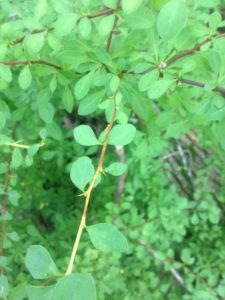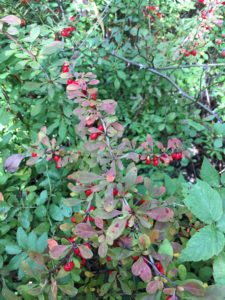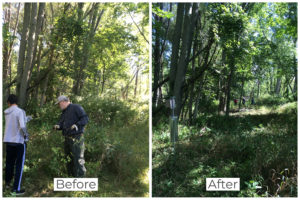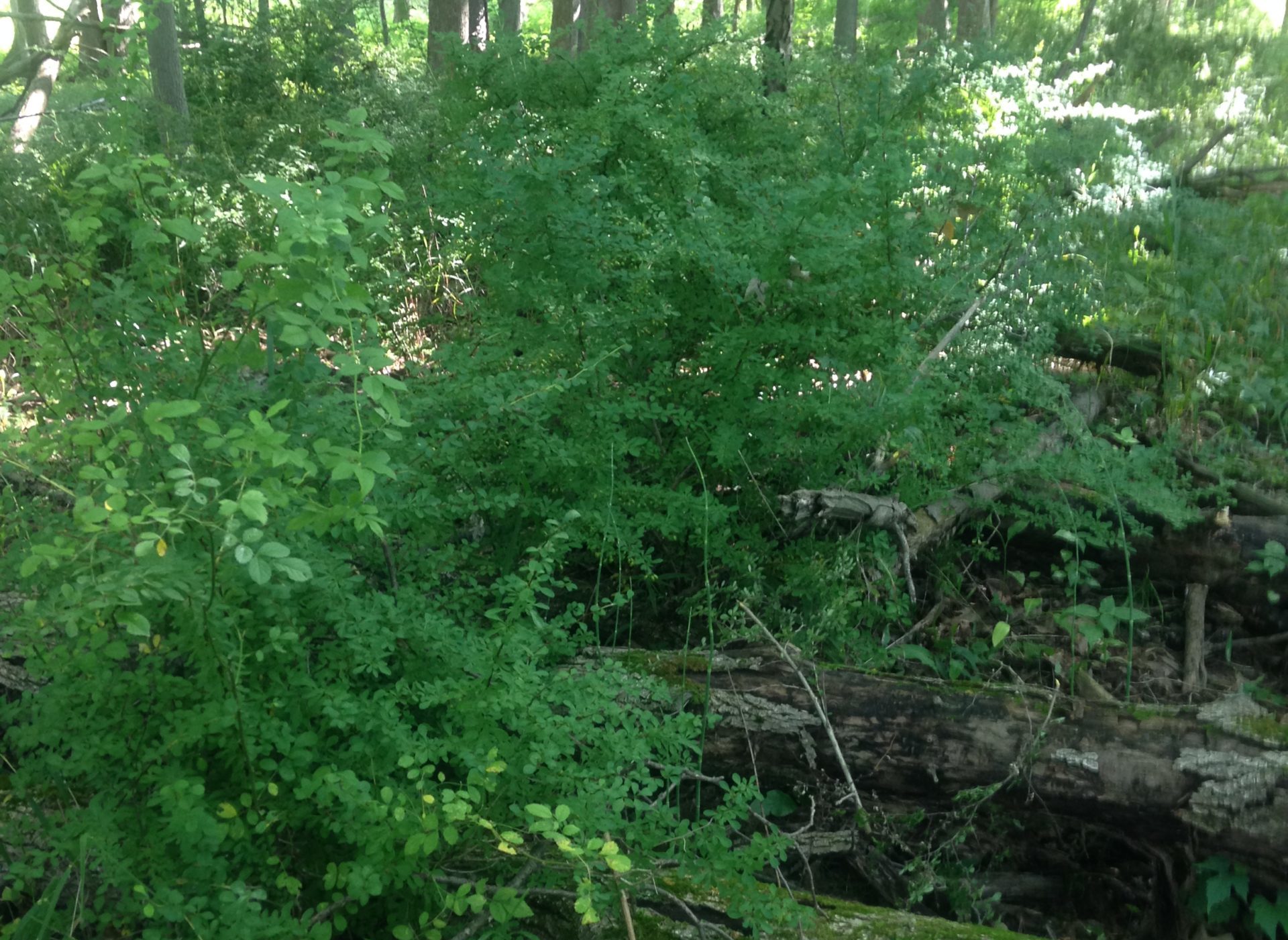
Japanese barberry has small, spoon-shaped leaves and sharp thorns along its stem.
Japanese barberry (Berberis thunbergii) is a woody shrub that spreads (or “escapes”) from landscaped plantings. Japanese barberry, despite its known invasive traits, remains frequently cultivated and sold in nurseries in Michigan as an ornamental plant. If you note a barberry shrub in your yard (which is a common occurrence in many neighborhoods), we encourage you to replace it with a native shrub that will be beautiful and beneficial to birds with nutritious berries! Check out our resources here to find a suitable native shrub for your yard: Michigan Native Plants for Bird-friendly Landscapes.
Japanese barberry is easily able to outcompete native plants due to its prolific berries (spread by birds and wildlife), and with its very prickly thorns, it is not browsed by deer or rabbits, or by livestock. Interestingly, studies have shown that patches of Japanese barberry have higher concentrations of both black-legged ticks and white-footed mice than are found under native shrubs. Black-legged ticks carry and transmit Lyme disease to humans, and white-footed mice are the larval host for these ticks. Barberry thickets have a microclimate that is moister, which is preferred by the ticks. Yet another reason to get rid of this invasive plant on your property!

The berries on Japanese barberry turn bright red in the fall.
How to identify:
This is a small, compact shrub, usually growing to about 2 feet tall, but sometimes larger. Looking through a woodlot with many barberry shrubs, you may be able to pick out distinct small clumps once you learn to recognize Japanese barberry. Japanese barberry has small, green or purplish spoon-shaped leaves. It has sharp thorns along each stem. In fall, its berries turn a bright red.
What to do:
This invasive species may be controlled mechanically through hand-pulling, especially where barberry plants are not very dense and widespread (you’ll need to wear thick leather gloves, however, to protect yourself from its abundant thorns!). Cutting the plant is an effective control method, but only if cut stems are treated with herbicide, as barberry will readily re-sprout from cut stems if not treated. It’s best to target barberry plants that are producing berries to prevent further spread of its seeds. This time of year (late fall) is a good time to walk your property and find those bright red berries on barberry bushes, as many native plants are going dormant and losing their leaves while barberry retains its leaves and berries a little longer.

Removal of Japanese barberry before and after photo by volunteers at Capital City Bird Sanctuary.
At Michigan Audubon sanctuaries, volunteers and staff put in many hours dedicated to controlling the spread of Japanese barberry. We typically use the cut and daub method, cutting individual barberry stems and dabbing herbicide directly on the cut stem. Japanese barberry is only one of many invasive plants we target on volunteer workdays — others include autumn olive, multiflora rose, and European privet. These woody invasive plants may be effectively treated with herbicide from July through late winter. If you’d like to join our volunteer crew, we’d love to have your help! Fill out a volunteer application form today!
Learn more about identification of Japanese barberry and what you can do to reduce its spread: https://www.michigan.gov/documents/dnr/Japanese_Barberry_389121_7.pdf
Why go native? Native plants are not only beneficial to birds, but also the function of healthy, natural habitats. Learn more about the connection between plants, beneficial insects, and birds: https://www.michiganaudubon.org/bfc/bird-friendly-plants/

